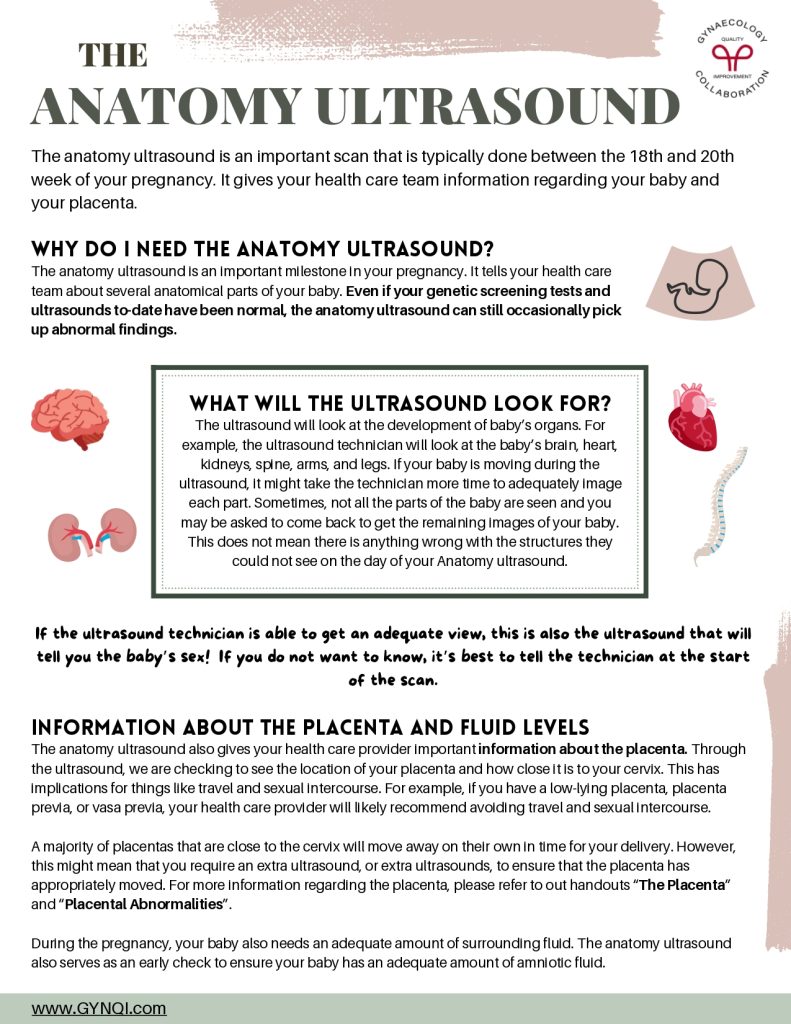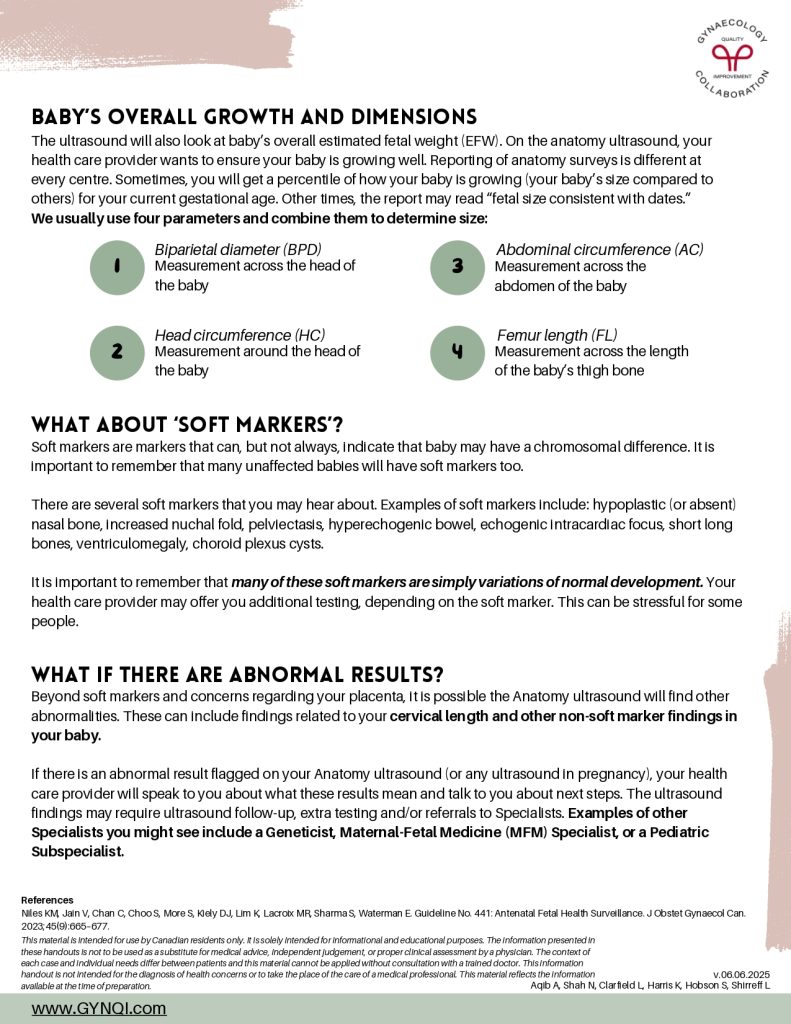
The Anatomy Ultrasound
The anatomy ultrasound is an important scan that is typically done between the 18th and 20th week of your pregnancy. It gives your health care team information regarding your baby and your placenta.
Why Do I Need the Anatomy Ultrasound?
The anatomy ultrasound is an important milestone in your pregnancy. It tells your health care team about several anatomical parts of your baby. Even if your genetic screening tests and ultrasounds to-date have been normal, the anatomy ultrasound can still occasionally pick up abnormal findings.
What Will the Ultrasound Look For?
The ultrasound will look at the development of baby’s organs. For example, the ultrasound technician will look at the baby’s brain, heart, kidneys, spine, arms, and legs. If your baby is moving during the ultrasound, it might take the technician more time to adequately image each part. Sometimes, not all the parts of the baby are seen and you may be asked to come back to get the remaining images of your baby. This does not mean there is anything wrong with the structures they could not see on the day of your Anatomy ultrasound.
If the ultrasound technician is able to get an adequate view, this is also the ultrasound that will tell you the baby’s sex! If you do not want to know, it’s best to tell the technician at the start of the scan.
Information About the Placenta and Fluid Levels
The anatomy ultrasound also gives your health care provider important information about the placenta. Through the ultrasound, we are checking to see the location of your placenta and how close it is to your cervix. This has implications for things like travel and sexual intercourse. For example, if you have a low-lying placenta, placenta previa, or vasa previa, your health care provider will likely recommend avoiding travel and sexual intercourse.
A majority of placentas that are close to the cervix will move away on their own in time for your delivery. However, this might mean that you require an extra ultrasound, or extra ultrasounds to ensure that the placenta has appropriately moved. For more information regarding the placenta, please refer to our handouts “The Placenta” and “Placental Abnormalities”.
During the pregnancy, your baby also needs an adequate amount of surrounding fluid. The anatomy ultrasound also serves as an early check to ensure your baby has an adequate amount of amniotic fluid.
Baby’s Overall Growth and Dimensions
The ultrasound will also look at baby’s overall estimated fetal weight (EFW). On the anatomy ultrasound, your health care provider wants to ensure your baby is growing well. Reporting of anatomy surveys is different at every centre. Sometimes, you will get a percentile of how your baby is growing (your baby’s size compared to others) for your current gestational age. Other times, the report may read “fetal size consistent with dates.” We usually use four parameters and combine them to determine size:
- Biparietal diameter (BPD): Measurement across the head of the baby
- Head circumference (HC): Measurement around the head of the baby
- Abdominal circumference (AC): Measurement across the abdomen of the baby
- Femur length (FL): Measurement across the length of the baby’s thigh bone
What About ‘Soft Markers’?
Soft markers are markers that can, but not always, indicate that baby may have a chromosomal difference. It is important to remember that many unaffected babies will have soft markers too.
There are several soft markers that you may hear about. Examples of soft markers include: hypoplastic (or absent) nasal bone, increased nuchal fold, pelviectasis, hyperechogenic bowel, echogenic intracardiac focus, short long bones, ventriculomegaly, choroid plexus cysts.
It is important to remember that many of these soft markers are simply variations of normal development. Your health care provider may offer you additional testing, depending on the soft marker. This can be stressful for some people.
What if There are Abnormal Results?
Beyond soft markers and concerns regarding your placenta, it is possible the Anatomy ultrasound will find other abnormalities. These can include findings related to your cervical length and other non-soft marker findings in your baby.
If there is an abnormal result flagged on your Anatomy ultrasound (or any ultrasound in pregnancy), your health care provider will speak to you about what these results mean and talk to you about next steps. The ultrasound findings may require ultrasound follow-up, extra testing and/or referrals to Specialists. Examples of other Specialists you might see include a Geneticist, Maternal-Fetal Medicine (MFM) Specialist, or a Pediatric Subspecialist.




